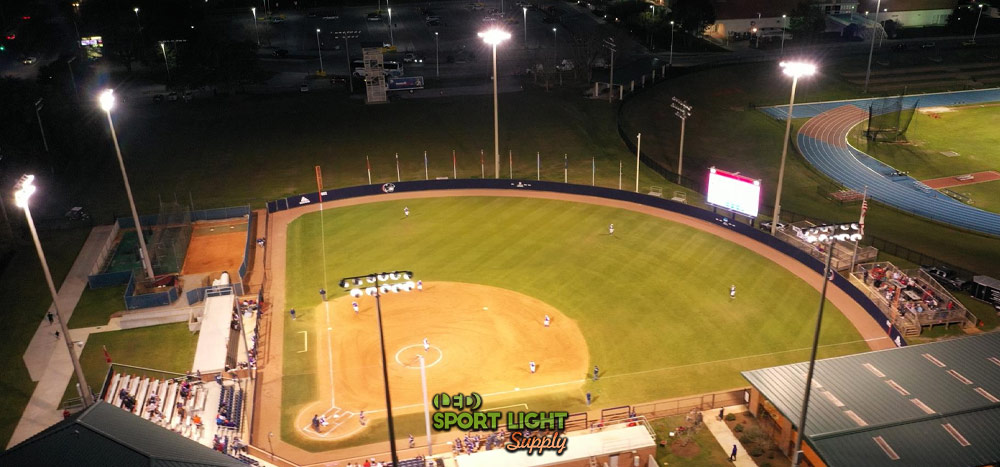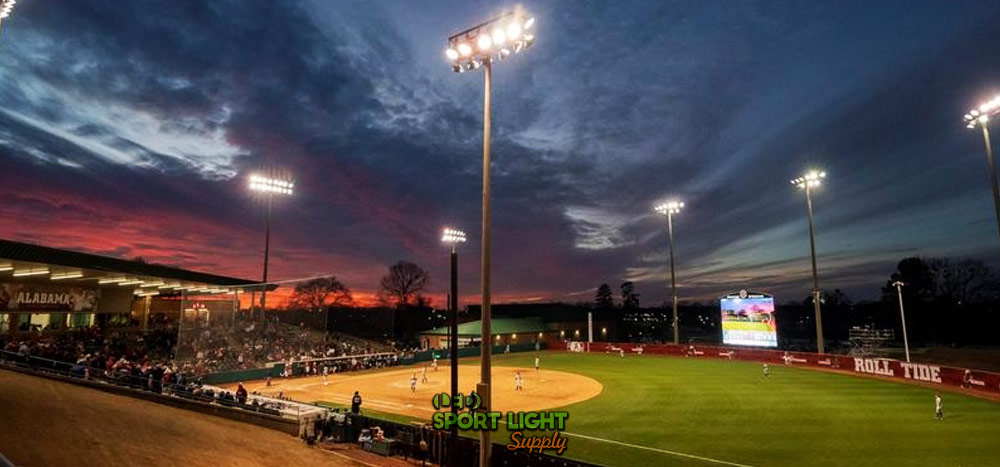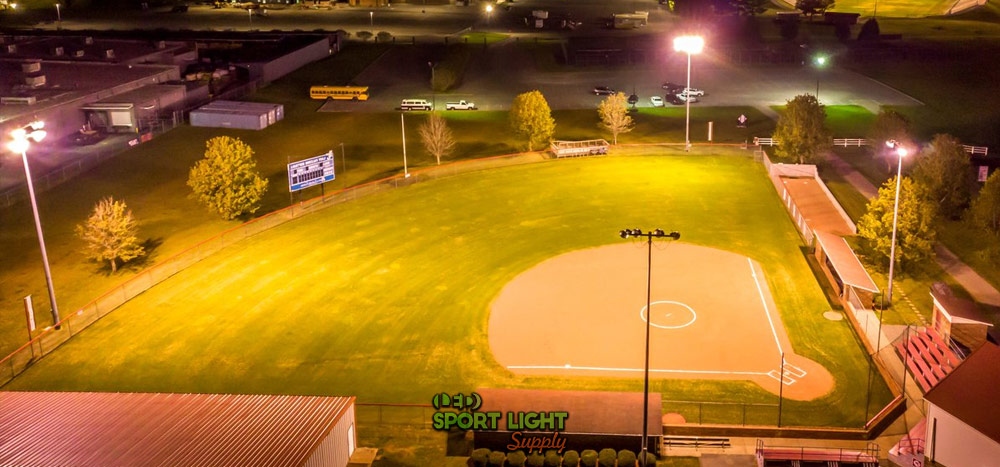Selecting the ideal lighting for a softball field can be a complex and multifaceted endeavor due to the numerous factors that need to be considered. The process involves more than simply choosing a fixture; it requires an understanding of how various types of lighting equipment will impact both the functionality and overall cost of the lighting system. Opting for inadequate or inappropriate lighting can result in significantly higher costs, not only for the initial installation but also for long-term operation and maintenance.
In this article, we will delve into the fundamentals of LED lighting specifically designed for softball fields. We will explore the advantages and considerations associated with LED technology, such as energy efficiency, brightness, and durability, and how these factors influence both upfront and ongoing expenses. By understanding these aspects, you can make an informed decision that balances performance with cost-effectiveness, ensuring that your softball field remains well-lit and operational without incurring unnecessary expenses.
Table of Contents
ToggleCost of Retrofitting Softball Field Lighting Systems to LED
Understanding the Retrofit Process

Retrofitting is a popular method for upgrading lighting systems on softball fields. This process involves replacing existing lighting technologies, such as metal halide, halogen, or mercury vapor fixtures, with modern LED systems. One of the key advantages of retrofitting is that it often allows for the use of the existing light pole layout. Whether your field has four or six poles, the retrofit process involves removing the old fixtures and installing new LED lights in their place. This straightforward approach can minimize the amount of work and disruption compared to a complete overhaul.
Cost Breakdown by Level of Competition
The cost to retrofit a softball field lighting system to LED varies depending on the level of competition and the specific requirements of the project. Here’s a general overview of the average costs associated with retrofitting for different types of fields:
| Competition level | Average cost of retrofitting softball field lights |
| Amateur or recreational | $20,000 to $40,000 |
| College or regional competition | $50,000 to $80,000 |
| Professional softball field | $75,000 to $180,000 |
Factors Influencing Retrofit Costs
The total cost of retrofitting a softball field with LED lighting can vary widely, generally ranging from $20,000 to $180,000. Factors influencing the final cost include the number of fields being upgraded, the specific lighting requirements, and any additional adjustments needed for optimal performance.
Cost of Installing Softball Field Lighting
Overview of Installation Costs
Installing lighting for softball fields can be a substantial investment. The total installation cost varies based on the field’s size, the level of competition, and the specific requirements of the lighting system. On average, the cost to install a complete softball field lighting system ranges from approximately $100,000 to $300,000. This cost encompasses various components, including labor, wiring, and excavation.
Breakdown of Installation Expenses
The cost of installing softball field lighting can be divided into several key components:
| Installation cost of softball field lights | Expenses |
| New pole installation | $15,000 to $30,000 |
| New lights installation | $10,000 to $25,000 |
| Wiring for the softball field floodlights | $5,000 to $10,000 |
| Cost to buy softball field lights | $8,000 to $50,000 |
Labor Costs and Installation Time
Labor costs account for approximately 20% to 30% of the total installation cost. This includes the specialized skills required to install the lights on the poles and ensure proper alignment with the field’s lighting layout. Installation generally takes between one to three days, depending on the complexity of the project. Although labor costs may seem high, investing in experienced professionals ensures the quality and longevity of the lighting system.
Running Costs of Softball Field Lighting

Understanding Operating Costs
Once the softball field lighting system is installed, it’s important to consider the ongoing costs of running it. These operating costs can vary significantly depending on the type of lighting used. Comparing different light sources, such as LED and HID (High-Intensity Discharge) lights, will provide insight into the cost differences.
Cost of Running LED Lights
LED lights are known for their efficiency and longevity. With a lifespan of approximately 120,000 hours, LED lights offer substantial savings on both energy and maintenance costs. To determine the running cost of LED lights, first, consider the total wattage of the lighting system. For instance, if you have 10,000 watts of LED lights installed, you can calculate the hourly cost of running these lights by multiplying the wattage by the electricity rate. Then, divide this product by 1,000 to convert watts to kilowatts. For example, with an electricity rate of $0.15 per kilowatt-hour, the cost would be $1.50 per hour. This low operating cost is due to the high efficiency of LEDs, which consume less power while providing ample illumination.
Cost of Running HID Lights
In contrast, HID lights are less efficient and require more energy to produce the same amount of brightness as LED lights. To match the brightness of 10,000 watts of LED lighting, you would need 100,000 watts of HID lighting. To calculate the running cost for HID lights, you use the same approach: multiply the total wattage by the electricity rate and then divide by 1,000. Using an electricity rate of $0.15 per kilowatt-hour, running 100,000 watts of HID lighting would result in a cost of $15 per hour. This significantly higher cost reflects the greater energy consumption of HID lights compared to LEDs.
Factors Affecting Softball Field Lighting Costs
Softball Field Lighting Layout
When planning the cost of lighting a softball field, the layout of the field plays a crucial role. Although baseball and softball fields share similarities, their layouts and sizes differ, influencing the overall lighting requirements. Softball fields are generally smaller than baseball fields due to the nature of the sport. The larger, heavier, and softer nature of a softball results in a shorter flight distance, requiring a smaller playing area.
The size of the field, including both the infield and outfield dimensions, affects the amount of lighting needed. Some fields may require more lighting based on their specific dimensions, while others may need less. The level of play also impacts the field size. For instance, a standard minor league baseball field has bases set 60 feet apart, with the outfield fence approximately 200 feet from home plate. These factors should be considered when determining the lighting layout and costs.
Light Pole Layout

Softball fields are typically illuminated using either four, six, or even eight light poles. A common setup involves four light poles, which is often preferred due to lower installation and wiring costs. In this arrangement, two poles light the infield and outfield, while the remaining two focus on the outfield. High-quality LED lights can provide adequate brightness and uniformity with this setup.
Alternatively, a six-pole layout involves adding two additional poles. This configuration allows for four poles to illuminate the infield and outfield, while the extra two poles are primarily dedicated to the outfield. This setup can reduce lighting costs by minimizing light loss and effectively covering smaller areas with more focused lighting.
Height of Softball Field Light Poles
The height of the light poles is another significant factor influencing the cost. For smaller fields, light poles typically range from 30 to 50 feet in height. Larger or standard-sized fields may require poles that are 45 to 65 feet tall, depending on the field’s construction design. Taller poles generally offer better lighting uniformity but may result in greater light loss.
To optimize lighting effectiveness and minimize glare, it’s essential to have a detailed lighting plan before purchasing new poles. This plan should include considerations for light spillage and the impact on nearby residents. Proper optical design in the lighting fixtures can help reduce glare and ensure that the lighting system meets both performance and community standards.
How to Find the Best Softball Field Lighting Company
When searching for the ideal company to provide lighting for your softball field, it’s essential to choose a provider with the expertise and resources to meet your specific needs. With numerous sports lighting companies available, finding the right one can be challenging. Here’s a guide to help you make an informed decision and secure the best lighting solution for your project.
Look for Experience and Specialization
Selecting a company with extensive experience in sports lighting, especially for softball fields, is crucial. An experienced provider will have a deep understanding of the unique requirements and challenges associated with illuminating sports fields. Companies like SportLightSupply, known for their specialization in sports and stadium lighting, are well-equipped to handle various lighting needs for different types of fields, including both softball and baseball.
Check for Comprehensive Services
A reputable lighting company should offer more than just lighting fixtures. Look for a provider that delivers a complete range of services, from initial consultation and design to installation and maintenance. For example, SportLightSupply offers a free DIALux lighting design service, which helps determine the optimal number of lights and the necessary lumens to effectively illuminate your softball field. This comprehensive approach ensures that you receive a tailored lighting solution that meets your specific requirements.
Evaluate Customer Support and Communication
Effective communication and customer support are key factors in selecting the right lighting company. Choose a provider that is responsive and willing to answer all your questions. A company that offers personalized assistance and is proactive in addressing your needs will help ensure a smooth project experience. For instance, SportLightSupply provides easy access to their team through a contact form, making it simple to inquire about their services and get expert advice.
Review Previous Projects and Testimonials
Investigate the company’s track record by reviewing their previous projects and customer testimonials. This will give you insight into their level of expertise and the quality of their work. Look for case studies or examples of past softball field lighting installations to gauge their ability to handle similar projects.
Consider Cost and Value
While cost is an important factor, it should be weighed alongside the value and quality of the service provided. Opt for a company that offers competitive pricing without compromising on the quality of the lighting equipment or services. A well-established company with a solid reputation is likely to provide better value in terms of both product durability and overall performance.
Conclusion
Selecting the right company for your softball field lighting project is crucial for achieving optimal performance and cost-effectiveness. By choosing an experienced provider like SportLightSupply, you benefit from expert advice, comprehensive services, and tailored lighting solutions designed to meet your specific needs. For a seamless and successful lighting installation, reach out to SportLightSupply today and take advantage of their free DIALux design service to ensure your field is illuminated to perfection.
